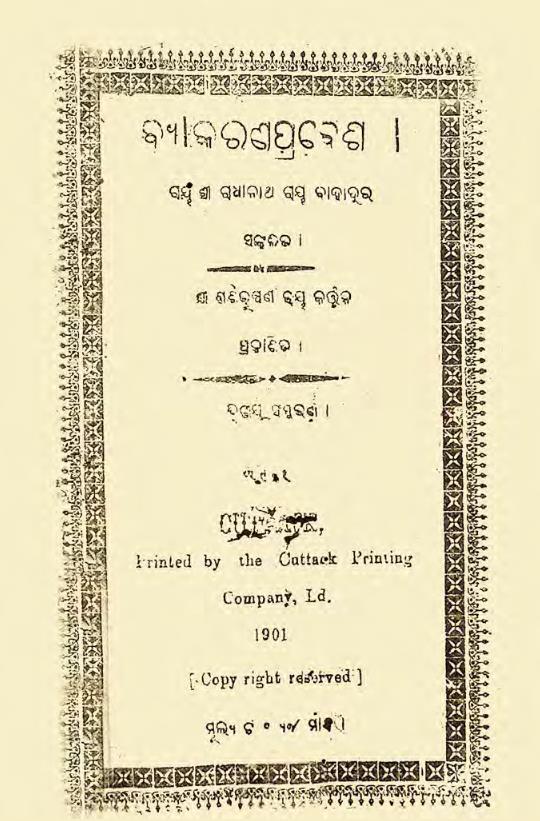The rich tapestry of Odia language is woven with its intricate grammar, which not only facilitates communication but also preserves the cultural heritage of Odisha. Among the pivotal works that have contributed significantly to the understanding and teaching of Odia grammar is Byakaran Prabes, penned by the eminent scholar Radhanath Ray in 1901. This seminal text is much more than a grammar book; it is a testament to the linguistic and literary evolution of the Odia language.
Radhanath Ray, a beacon of Odia literature, wrote Byakaran Prabes to provide a structured approach to learning and understanding the nuances of the Odia language. His dedication to Odia phonetics, syntax, morphology, and semantics laid a solid foundation for future generations of learners and scholars. The second edition of this work, published after its initial release, reflects Ray’s commitment to refining and improving the discourse on Odia grammar.
One of the standout features of Byakaran Prabes is its comprehensive examination of Odia phonetics. Ray meticulously outlines the sounds of the Odia language, discussing both vowels and consonants, thereby enabling learners to grasp the fundamental building blocks of pronunciation. This focus on phonetics is crucial, as it influences one’s ability to read and write effectively in Odia. By understanding the sound system, learners can appreciate the beauty of Odia poetry and prose, which often relies on rhythm and rhyme.
In addition to phonetics, Ray delves deep into the syntactical structures of Odia. He elucidates the subject-verb-object order, the use of postpositions instead of prepositions, and the unique ways in which different sentence structures can convey varying nuances of meaning. This exploration not only aids in sentence construction but also enhances one’s understanding of how meaning is constructed in the Odia language, a key aspect for translation and interpretation.
Another significant contribution of Byakaran Prabes is its focus on morphology, particularly the formation and inflection of words. Ray highlights how prefixes, suffixes, and root words interact to create a rich vocabulary. This morphological insight is invaluable for learners as it equips them with the tools needed to expand their lexicon and express complex ideas succinctly.
Furthermore, Ray’s treatment of semantics—the study of meaning—offers learners a profound insight into the subtleties of the language. He discusses idiomatic expressions, proverbs, and cultural references that enrich the Odia language, linking language to the identity and traditions of the Odia people. This cultural context is indispensable for anyone seeking to master the language fully.
Byakaran Prabes also reflects Radhanath Ray’s vision for the future of the Odia language, emphasizing the need for its preservation and promotion at a time when regional languages faced challenges from colonial and global influences. His scholarly work serves as both a guide and an inspiration for educators, linguists, and students alike, encouraging them to appreciate and engage with their linguistic heritage.
Books Info
| Books name | Byakaran Prabes / ବ୍ୟାକରଣ ପ୍ରବେଶ |
| Author | Radhanath Ray |
| No Of pages | 175 |
| Publisher | NA |
| Publication | 1901, 2e. |
| Printed At | NA |
| Distributor | NA |

